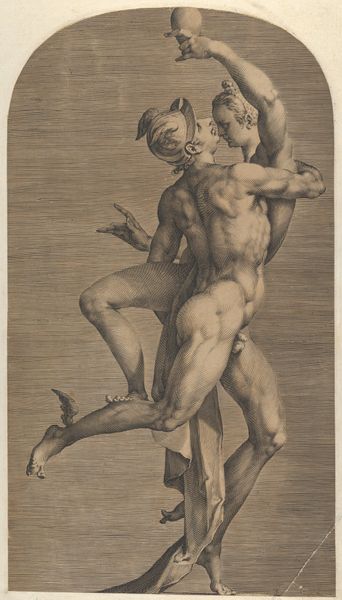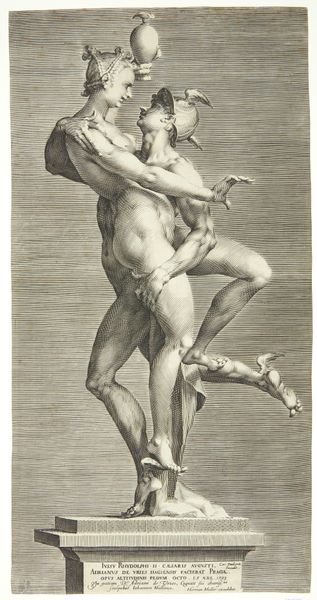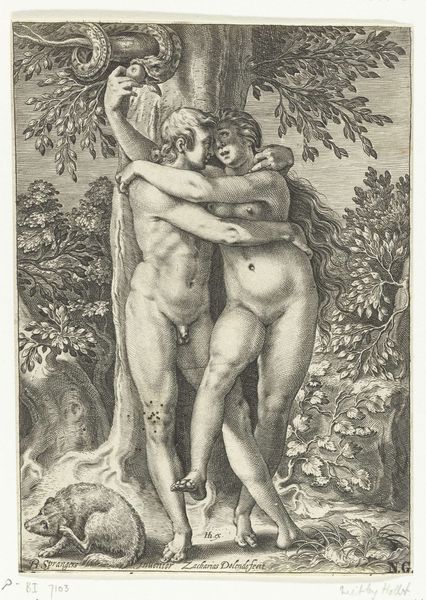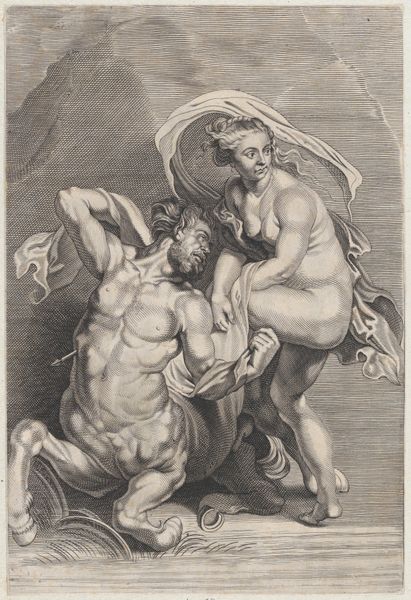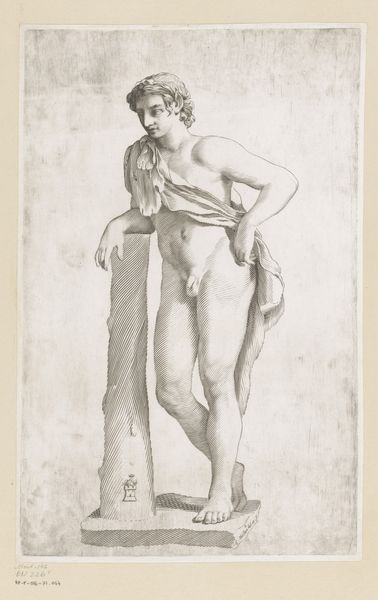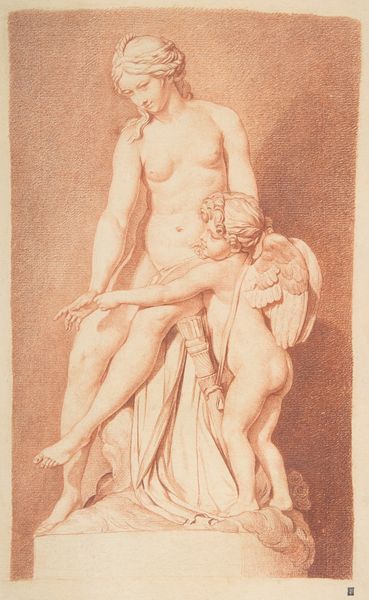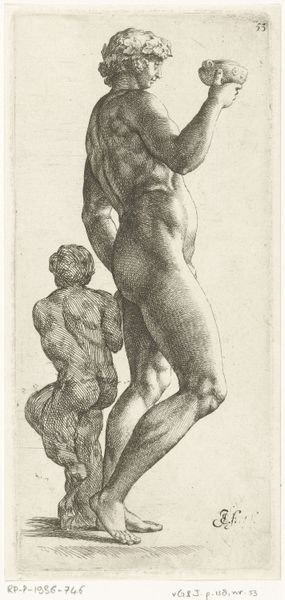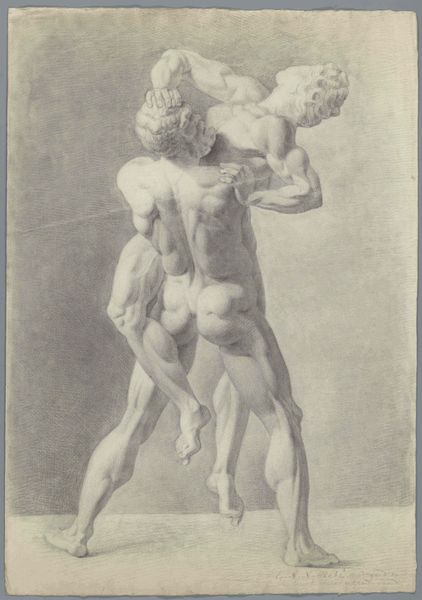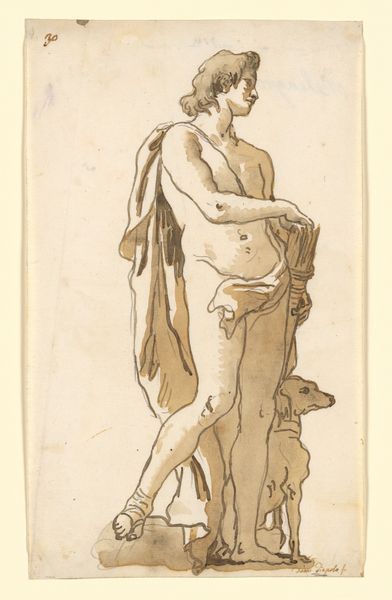
Mercury Abducting Psyche (view with Psyche from behind), from a set of three views of the sculpture 1588 - 1598
0:00
0:00
print, engraving
#
allegory
# print
#
mannerism
#
nude
#
engraving
Dimensions: Sheet (trimmed into image): 17 7/16 × 9 13/16 in. (44.3 × 25 cm)
Copyright: Public Domain
Editor: This engraving, "Mercury Abducting Psyche" by Jan Muller, dating back to sometime between 1588 and 1598, depicts a scene of abduction. It’s quite striking how muscular both figures are, even Psyche. What can you tell me about how this image speaks to its time? Curator: Looking at this Mannerist print, it's crucial to understand the societal frameworks that shaped its creation and reception. Jan Muller is clearly referencing the Classical myth, but it is just as critical to look through the lens of the prevailing power dynamics and gender roles of the time. How might the representation of Psyche's abduction speak to the broader subjugation and objectification of women during that period? Editor: So, are you suggesting that beyond the mythological narrative, there’s a commentary on female agency, or rather, the lack thereof? Curator: Precisely. And more than just "lack of agency". Consider also that these scenes of mythological abduction or rape were immensely popular, and served to, on one level, normalise similar events in real life, framing this act as almost heroic and certainly, a deed of powerful men. What is often celebrated is the power imbalance that should be seen as a blatant assault. Does knowing this influence how you feel about the piece? Editor: It does shift my perspective. Initially, I just saw a dramatic, mythological scene. But now, considering the historical context and its potential implications regarding gender and power dynamics, I feel like I understand its cultural impact. Curator: The Mannerist style emphasizes artifice and distortion, further complicating any straightforward interpretation of the narrative. Understanding art means critiquing and deconstructing not just the image, but its contribution to ongoing cultural discourses. Editor: This has given me a lot to think about. I had not seen all of the ways this piece operates within the culture it was produced in. Curator: Likewise. The dialogue between past art and today's theories helps us stay vigilant, ensuring art history does not shy away from the hard conversations.
Comments
No comments
Be the first to comment and join the conversation on the ultimate creative platform.


